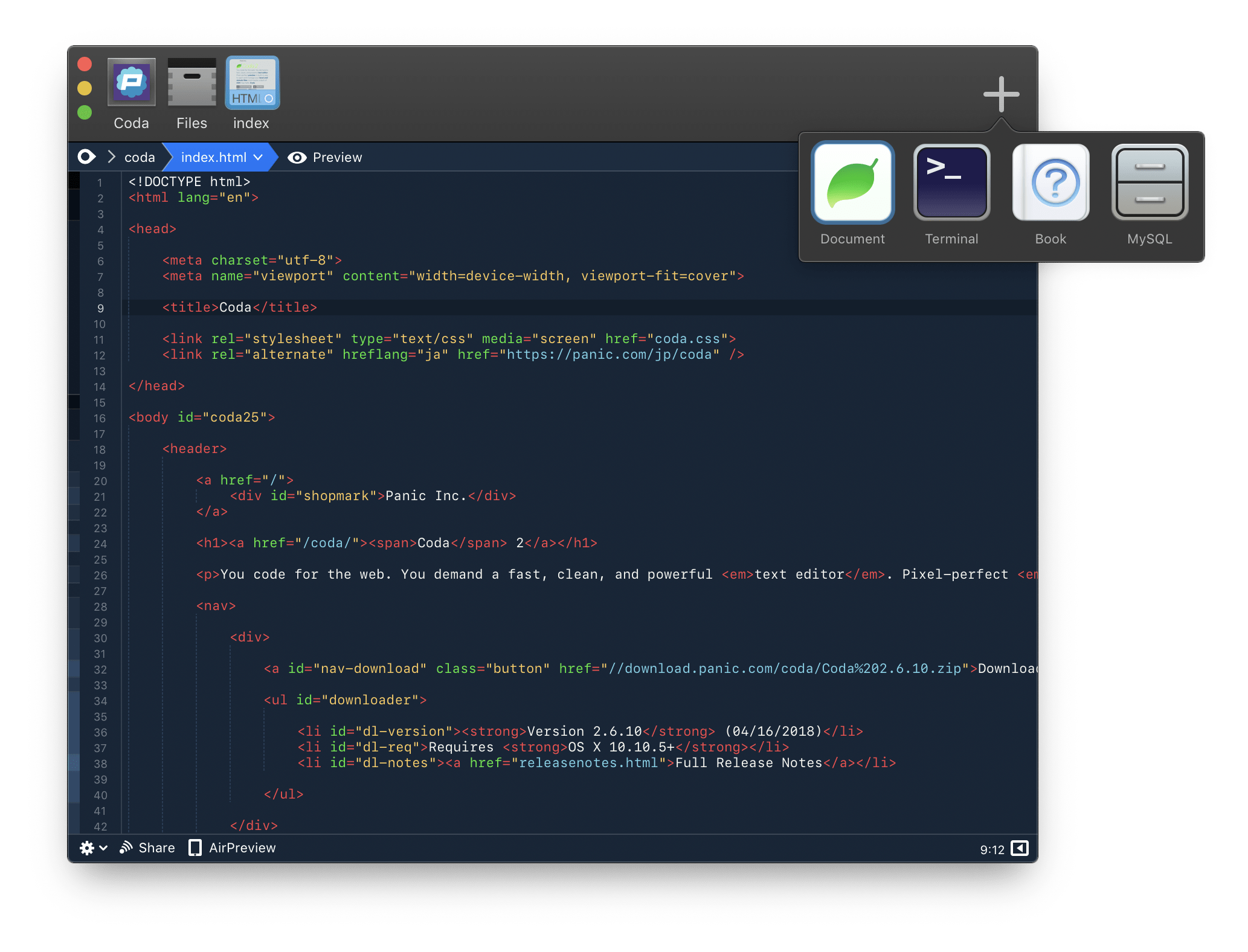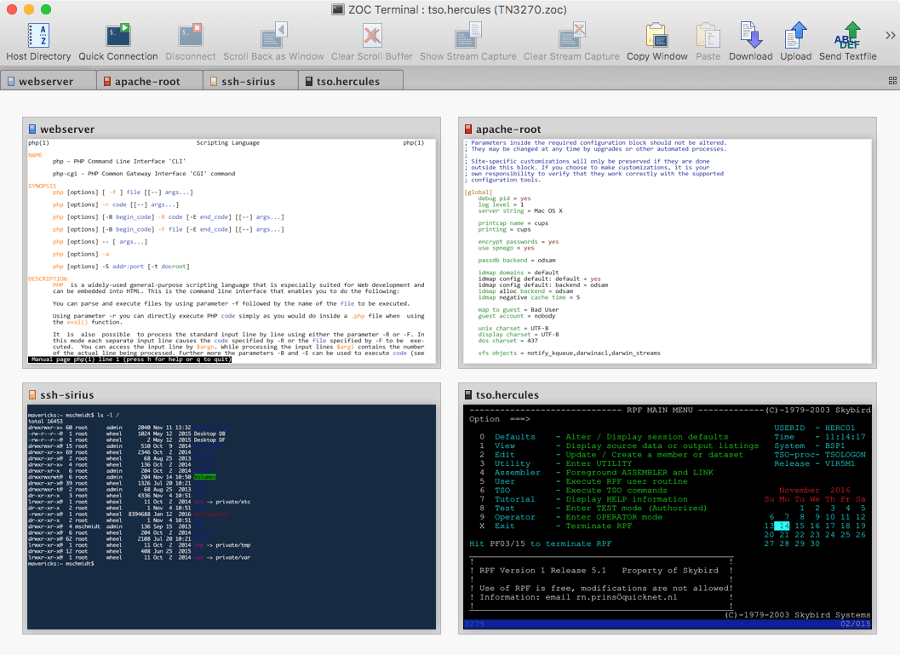A Terminal Emulator based on UWP and web technologies. Features Terminal for PowerShell, CMD, WSL or custom shells Built-in support for SSH and Mosh connections Supports tabs and multiple windows Theming and appearance configuration Import/Export themes Import iTerm themes Fullscreen mode Editable keybindings Search function Configure shell profiles to quickly switch between different shells.
- Joplin is a free, open source note taking and to-do application, which can handle a large number of notes organised into notebooks. The notes are searchable, can be copied, tagged and modified either from the applications directly or from your own text editor. The notes are in Markdown format. Notes exported from Evernote via.enex files can be imported into Joplin, including the formatted.
- Download ZOC Terminal for Mac to get a Secure Shell (SSH), Telnet, Rlogin, RS232 terminal emulator with tabbed sessions and scripts. ZOC Terminal has had 5 updates within the past 6 months.
- In the Terminal app on your Mac, in the window running the shell process you want to quit, type exit, then press Return. This ensures that commands actively running in the shell are closed. If anything’s still in progress, a dialog appears.
Most of the time, you can re-download the current version of macOS via the Mac App Store, and older ones via these links:
However, I’ve run into a situation several times where the Software Update mechanism simply refuses to initiate a download:
Thankfully, macOS installers can be downloaded via Terminal in macOS Catalina. This command will download the most recent version of macOS, depositing it in your Applications folder:
softwareupdate --fetch-full-installer
The softwareupdate command has some neat tricks up its sleeve, as pointed out by Armin Briegel:
The --fetch-full-installer flag has a sub-flag: --full-installer-version which allows you to download a specific version.
During my testing in the Catalina beta version I was able to download 10.15, 10.14.6, 10.14.5, and 10.13.6. I was not able to test if 10.13.6 would download the hardware specific build of 10.13.6 for the 2018 MacBook Pro, since I do not have that hardware.

So, to pull 10.13.6 down, you’d use:
softwareupdate --fetch-full-installer --full-installer-version 10.13.6
I wish Apple would just have a support document up with direct downloads for all of this stuff, but this tool is not a bad alternative.
Update: Don’t miss this documentation from JAMF for more on the subject.
Terminal User Guide
In Terminal, you can move and copy files locally or remotely using the mv, cp, and scp command-line tools.
Tip: It’s easier to move and copy files using the Finder. See Organize files in folders.
Move a file or folder locally
In the Terminal app on your Mac, use the
mvcommand to move files or folders from one location to another on the same computer. Themvcommand moves the file or folder from its old location and puts it in the new location.For example, to move a file from your Downloads folder to a Work folder in your Documents folder:
% mv ~/Downloads/MyFile.txt ~/Documents/Work/MyFile.txtYou can also change the name of the file as it’s moved:
% mv ~/Downloads/MyFile.txt ~/Documents/Work/NewFileName.txt
See the mv command man page.

Terminal App Mac Download App

Copy a file or folder locally

Open Terminal In Mac
In the Terminal app on your Mac, use the
cpcommand to make a copy of a file.For example, to copy a folder named Expenses in your Documents folder to another volume named Data:
% cp -R ~/Documents/Expenses /Volumes/Data/ExpensesThe
-Rflag causescpto copy the folder and its contents. Note that the folder name does not end with a slash, which would change howcpcopies the folder.
See the cp command man page.
Copy a file or folder remotely
In the Terminal app on your Mac, use the
scpcommand to copy a file or folder to or from a remote computer.scpuses the same underlying protocols asssh.For example, to copy a compressed file from your home folder to another user’s home folder on a remote server:
% scp -E ~/ImportantPapers.tgz username@remoteserver.com:/Users/username/Desktop/ImportantPapers.tgzYou’re prompted for the user’s password.
The
-Eflag preserves extended attributes, resource forks, and ACL information.The
-rflag, which isn’t used in this example, causesscpto copy a folder and its contents.
See the scp command man page.
